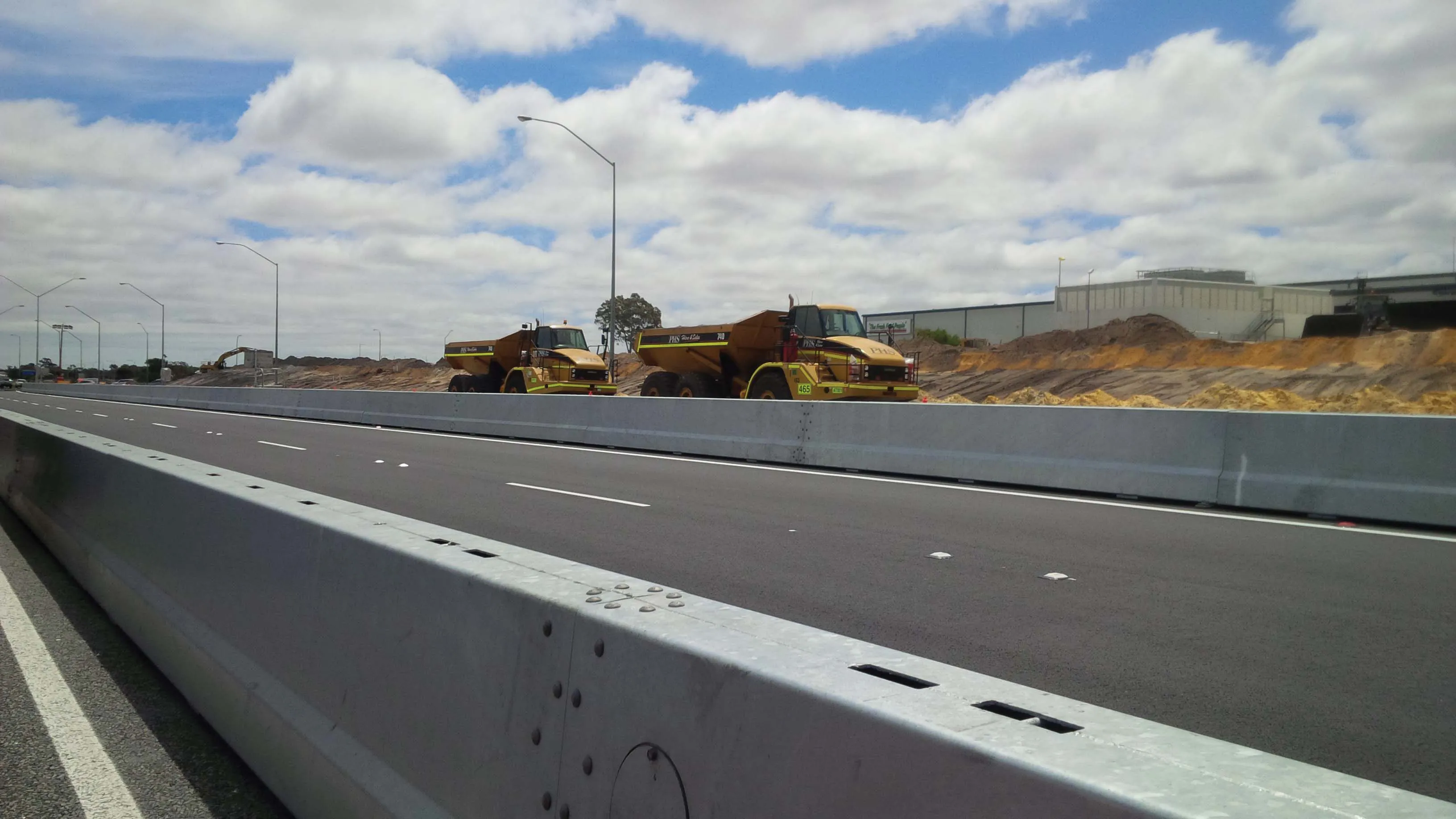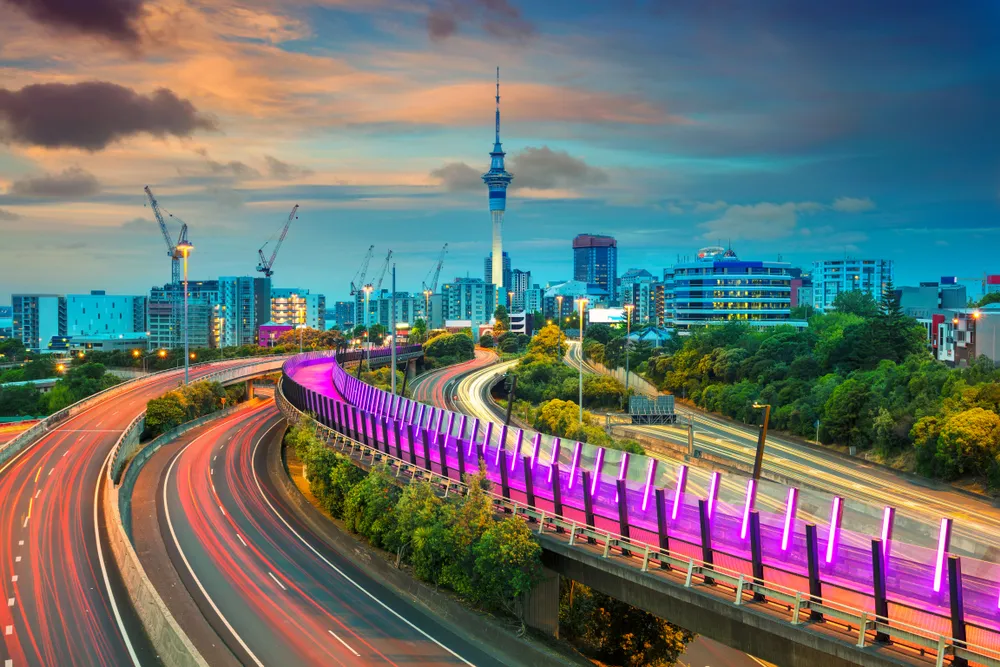Highway construction in the vast and varied Australasian landscape can be fraught with difficulties. Distance, extreme weather conditions and topographical challenges can all play a part in creating significant obstacles for design engineers. BarrierGuard 800, a state-of-the-art lightweight steel road safety barrier, is said to be proving invaluable in two ongoing projects setting new benchmarks for their respective regions.
The US$895.7 million (AUS$1 billion) Gateway WA Perth Airport and Freight Acces
March 10, 2014
Read time: 4 mins

Highway construction in the vast and varied Australasian landscape can be fraught with difficulties. Distance, extreme weather conditions and topographical challenges can all play a part in creating significant obstacles for design engineers. BarrierGuard 800, a state-of-the-art lightweight steel road safety barrier, is said to be proving invaluable in two ongoing projects setting new benchmarks for their respective regions.
The US$895.7 million (AUS$1 billion) Gateway WA Perth Airport and Freight Access Project is the largest infrastructure venture ever undertaken by Main Roads Western Australia.
Designed to improve the efficiency of one of WA's most important transport links, it will create crucial infrastructure around Perth Airport and nearby freight and industrial hubs.
The four-year project is being delivered in an alliance contract with five industry leaders -2685 Leighton Contractors, 6696 Georgiou, 3369 GHD, 1397 AECOM, and BG & E, together with 6508 Main Roads WA.
Gateway WA project manager Justin Redelinghuys said superior traffic management and worker safety was a high priority.
It was why the project team opted for the TL4-rated steel BarrierGuard 800 over the traditional TL3-rated concrete barriers widely used in Western Australia.
Distributed by1529 Highway Care International (HCI) and manufactured by Laura Metaal, BarrierGuard is said by HCI to be the only temporary steel barrier in the world to meet the requirements of the standard NCHRP 350 (Test Level 4) and EN 1317-2 (Containment Levels N2 and H2).
Gateway WA purchased 28km of BarrierGuard. Over the life of the project, it will provide 174km of separation to work zones from live traffic.
Mr Redelinghuys said the project team considered using concrete barriers but realised that steel would be much more cost-efficient.
"The real benefits are in handling - because steel is so lightweight and easy to handle, we save hugely on the transport costs of moving the barrier from site to site," he explained.
The longevity of steel - BarrierGuard has a 25-year lifespan - and its’ reduced deflection were other crucial factors, he said.
Mr Redelinghuys said the team's quest for innovative design solutions saw BarrierGuard chosen for the venture. "This is a showcase project for Western Australia, so it's important we do the best job we possibly can," he said.
Meanwhile in New Zealand, the State Highway 16 Causeway on the edge of Auckland's Waitemata Harbour has been causing headaches for New Zealand Transport Agency engineers for some years. Running through the sensitive Motu Manawa-Pollen Island marine reserve, it is prone to flooding during storms and high tides, resulting in traffic chaos for the 90,000 vehicles that use it every day.
The Causeway upgrade is a 4.8km-long project that will raise and widen the existing six-lane causeway. The four-year, US$182.25 million (NZ$220 million) venture is a key component in completing Auckland's Western Ring Route. The project is an alliance of the NZTA with AECOM, Coffey,6191 Fulton Hogan, Leighton Contractors and 1524 Sinclair Knight Merz.
Causeway Alliance area manager Hamish Matthews said BarrierGuard 800 was the obvious barrier of choice for traffic management during the project. "This is the first large-scale deployment of steel barriers in New Zealand," Matthews said. "But, to us it was a no-brainer," he said.
Matthews said steel's ease of handling was a key factor in the decision-making process. He said 144m of steel barrier could be loaded onto a single truck, compared to just 36m of concrete barrier. “Reducing the number of truck movements in a constrained site like this one makes a big difference," Matthews added.
BarrierGuard's TL4 safety rating was another plus. "We believe it's much safer for our team working behind it and that's very important to us," said Matthews.
Matthews said as the stock of steel barriers increased in New Zealand, they would become widely used. "Presently, contractors are using concrete but, more often than not, they become a liability at the end of a project. New Zealand is so spread out - it doesn't make economic sense to move concrete between, say, Auckland and Wellington. But, with steel you can.”
The US$895.7 million (AUS$1 billion) Gateway WA Perth Airport and Freight Access Project is the largest infrastructure venture ever undertaken by Main Roads Western Australia.
Designed to improve the efficiency of one of WA's most important transport links, it will create crucial infrastructure around Perth Airport and nearby freight and industrial hubs.
The four-year project is being delivered in an alliance contract with five industry leaders -
Gateway WA project manager Justin Redelinghuys said superior traffic management and worker safety was a high priority.
It was why the project team opted for the TL4-rated steel BarrierGuard 800 over the traditional TL3-rated concrete barriers widely used in Western Australia.
Distributed by
Gateway WA purchased 28km of BarrierGuard. Over the life of the project, it will provide 174km of separation to work zones from live traffic.
Mr Redelinghuys said the project team considered using concrete barriers but realised that steel would be much more cost-efficient.
"The real benefits are in handling - because steel is so lightweight and easy to handle, we save hugely on the transport costs of moving the barrier from site to site," he explained.
The longevity of steel - BarrierGuard has a 25-year lifespan - and its’ reduced deflection were other crucial factors, he said.
Mr Redelinghuys said the team's quest for innovative design solutions saw BarrierGuard chosen for the venture. "This is a showcase project for Western Australia, so it's important we do the best job we possibly can," he said.
Meanwhile in New Zealand, the State Highway 16 Causeway on the edge of Auckland's Waitemata Harbour has been causing headaches for New Zealand Transport Agency engineers for some years. Running through the sensitive Motu Manawa-Pollen Island marine reserve, it is prone to flooding during storms and high tides, resulting in traffic chaos for the 90,000 vehicles that use it every day.
The Causeway upgrade is a 4.8km-long project that will raise and widen the existing six-lane causeway. The four-year, US$182.25 million (NZ$220 million) venture is a key component in completing Auckland's Western Ring Route. The project is an alliance of the NZTA with AECOM, Coffey,
Causeway Alliance area manager Hamish Matthews said BarrierGuard 800 was the obvious barrier of choice for traffic management during the project. "This is the first large-scale deployment of steel barriers in New Zealand," Matthews said. "But, to us it was a no-brainer," he said.
Matthews said steel's ease of handling was a key factor in the decision-making process. He said 144m of steel barrier could be loaded onto a single truck, compared to just 36m of concrete barrier. “Reducing the number of truck movements in a constrained site like this one makes a big difference," Matthews added.
BarrierGuard's TL4 safety rating was another plus. "We believe it's much safer for our team working behind it and that's very important to us," said Matthews.
Matthews said as the stock of steel barriers increased in New Zealand, they would become widely used. "Presently, contractors are using concrete but, more often than not, they become a liability at the end of a project. New Zealand is so spread out - it doesn't make economic sense to move concrete between, say, Auckland and Wellington. But, with steel you can.”







